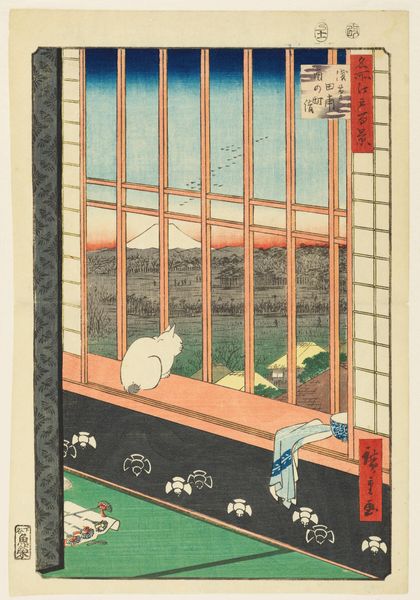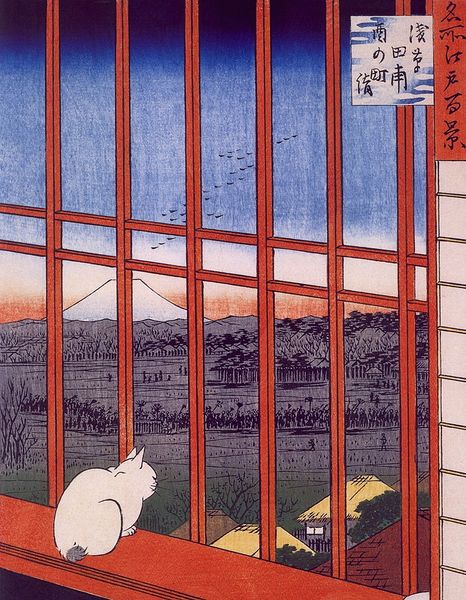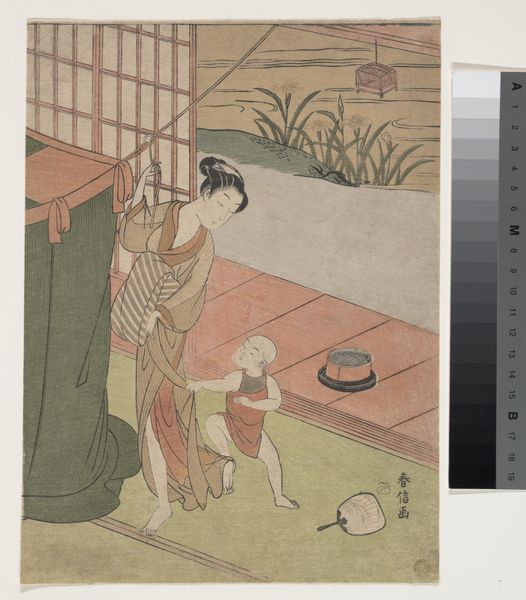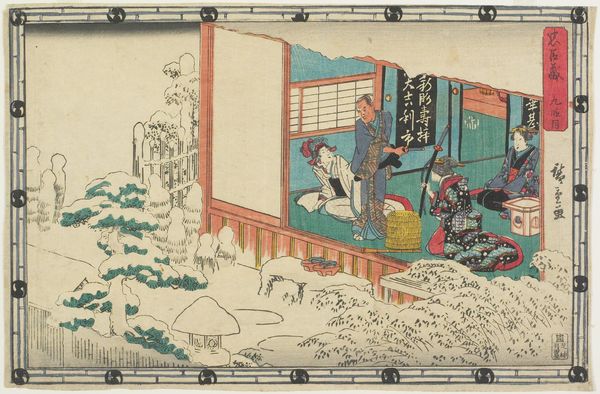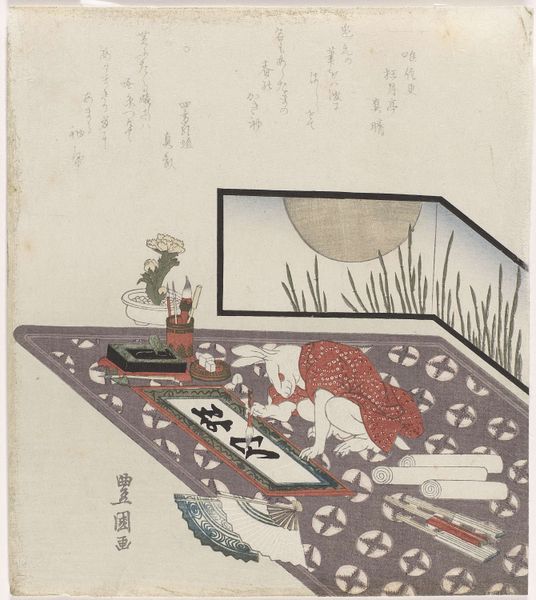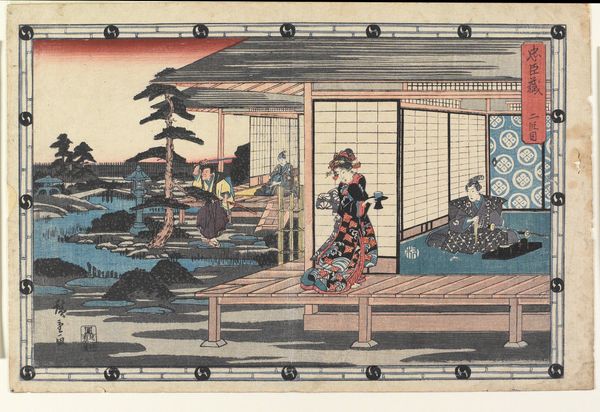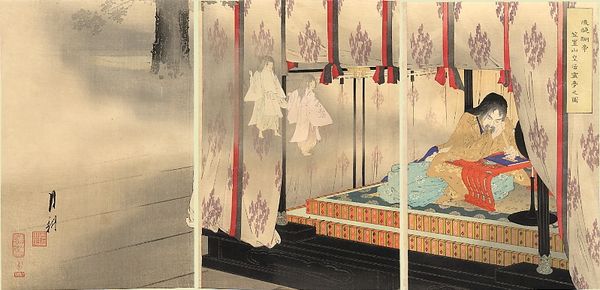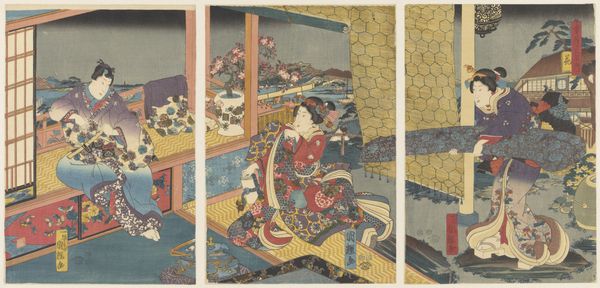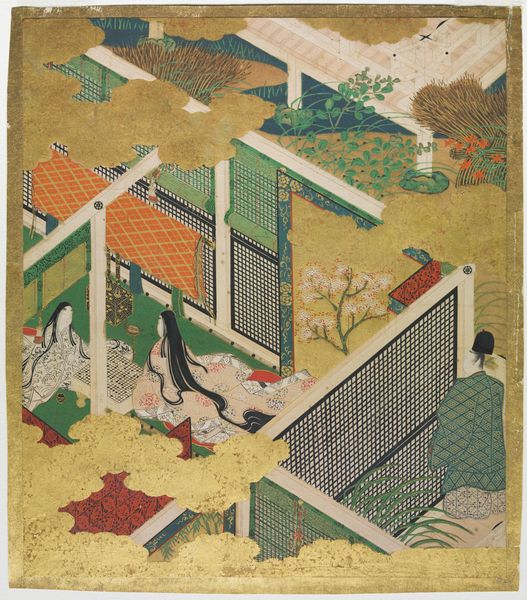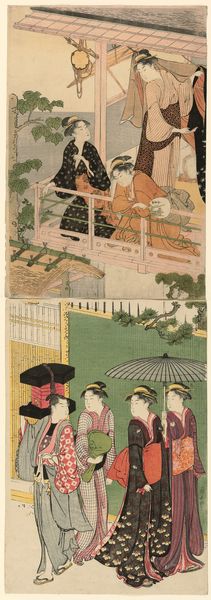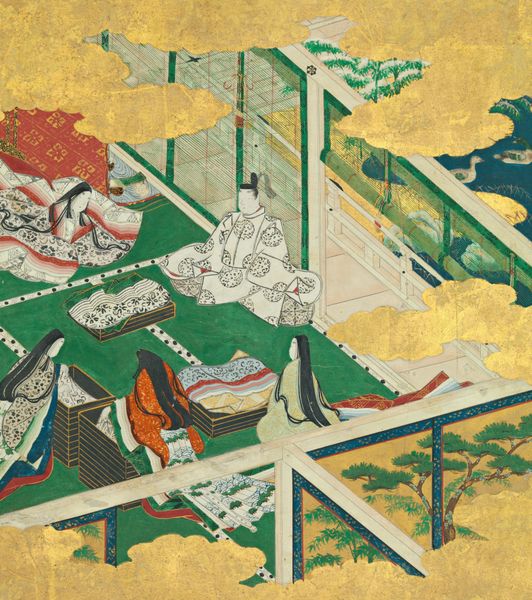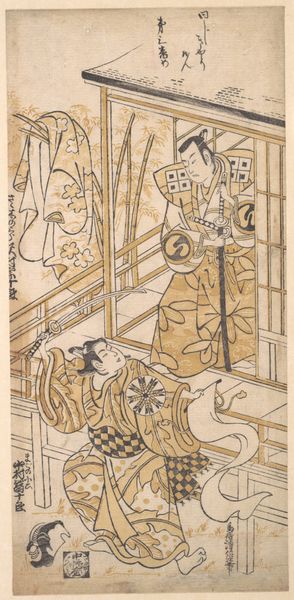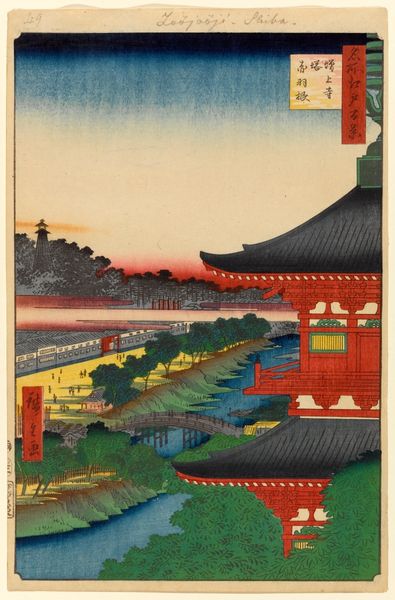
Dimensions: height 335 mm, width 225 mm
Copyright: Rijks Museum: Open Domain
Curator: Let’s turn our attention to a woodblock print titled "Asakusa ricefields and Torinomachi festival," created in 1857 by Utagawa Hiroshige, also known as Hiroshige I. Editor: It strikes me as incredibly serene, despite depicting a festival. There's this compelling contrast between the detailed interior and the panoramic view. Curator: Absolutely. Note how the artist uses a grid of the window to segment the landscape, creating a layered effect and controlling the viewers eye to gaze into the open landscape. The gaze stops as the artist uses colors of blue and red, as opposed to other monochromatic tones to set a scene for viewers' eyes. The composition, further broken down, gives this feeling of structured depth within a defined plane. Editor: And the choice of woodblock print—a distinctly material choice—underscores the labor-intensive process of production inherent in Ukiyo-e. The precise carving, the layering of colors—it speaks volumes about the craft involved. Also note, there's the integration of everyday objects, creating the towel, dish and cat staring off into a open landscape to really provide some insight to his working class process of what his environment consisted of. Curator: A keen observation. I'd add that the print's success hinges on its ability to resolve the tension between abstraction and representation, specifically, between the detailed patterns on the interior walls with flat colors and almost ethereal landscapes. Editor: True. The flatness almost flattens time—reducing temporal distance, linking past traditions of woodblock making to present viewing—making labor visible. And I'm wondering, what type of resources or means was the artist referring to. Curator: And in its harmonious composition and subtle color palette, we find a visual meditation on perspective, framing, and the serene beauty of the everyday. Editor: So while seeming to create this high class form of medium from viewing, the art consists of low-costed, highly accessible pieces, in the most fundamental and essential processes of our lived existence. Thank you, Curator. Curator: Thank you, Editor, for giving insights to a critical observation of work being tied to one's own resources.
Comments
No comments
Be the first to comment and join the conversation on the ultimate creative platform.
